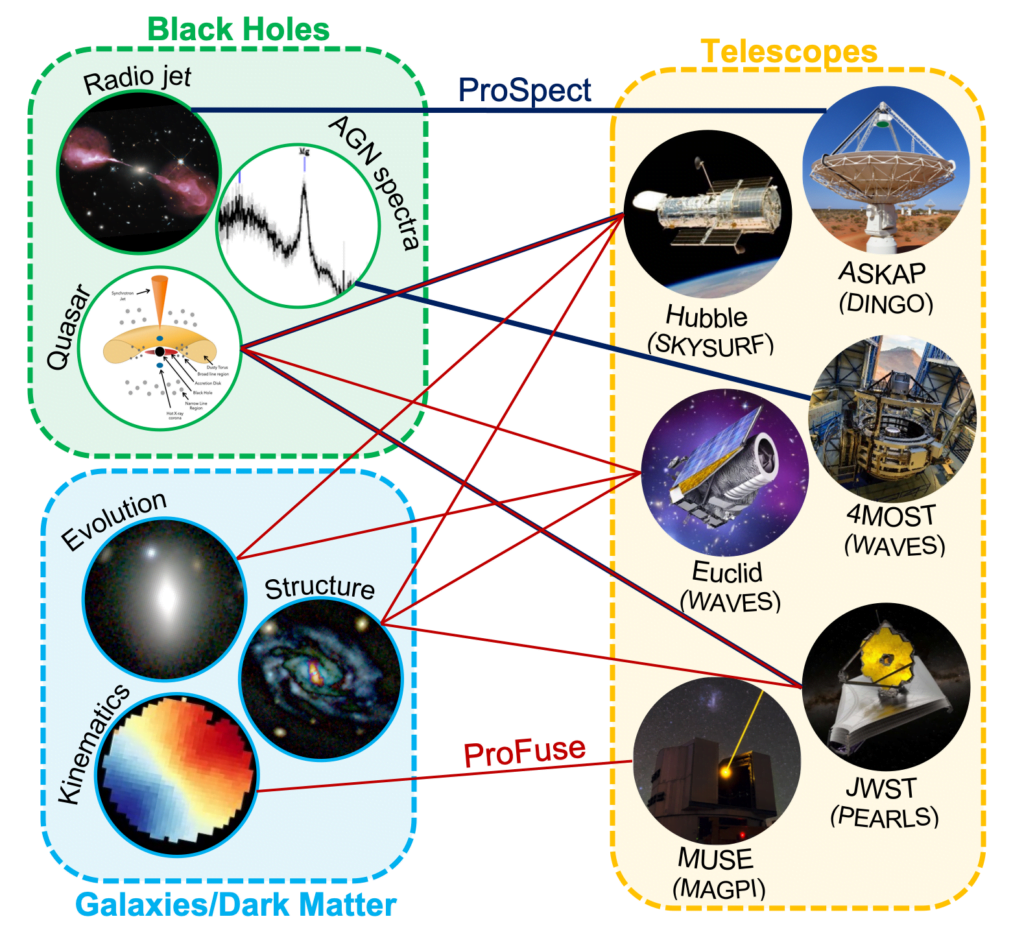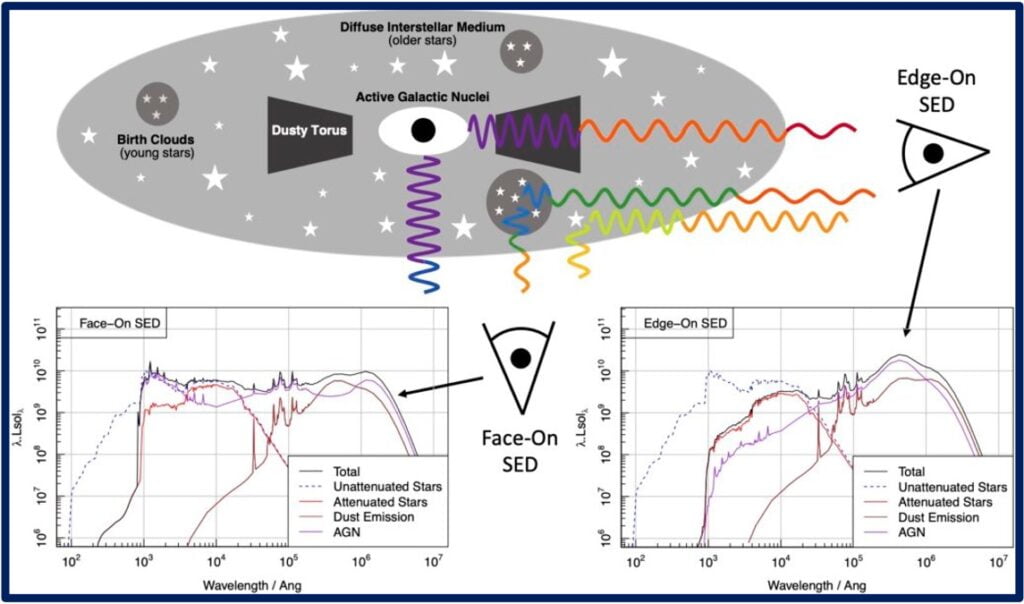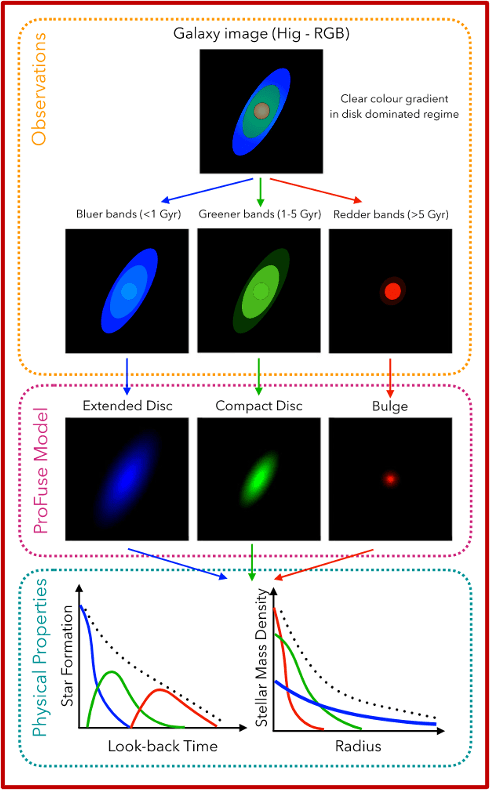Two of the biggest mysteries of the Universe are the roles supermassive black holes and dark matter have in shutting down star formation. These project will combine the best possible datasets and in-house modelling software to illuminate the darkness of our understanding.
In the case of black holes, we are yet to fully understand quasars (ultra luminous accretion disks) and radio jets (cosmic fire hoses a million light-years long). They clearly play a pivotal role in shutting down star formation in massive galaxies, but interpreting multiwavelength observations spanning the X-ray – radio has been extremely challenging.
In the case of dark matter, the mass of dark matter halos and the merger history that built them up appears to explain the shutting down of star formation in lower mass galaxies. But until the WAVES survey starts operations in 2024 we have not been able to probe the halo mass which hosts the majority of mass in the Universe (roughly the dark matter halo the Milky Way lives in).

The Physics
To unpick these processes our team at UWA has over the last 5 years developed a suite of bespoke tools that can analyse modern multiwavelength data in unique ways. The main theoretical modelling is undertaken with ProSpect (which converts a light spectrum into physical processes) and ProFuse (which applies ProSpect to spatial data, allowing us to unravel how physical processes change inside a galaxy).
These modelling tools use modern computing paradigms to handle massive amounts of data, and for this project you will be making use of one of the largest supercomputers in the world to extract as much physical insight as is feasible from every pixel of data.

ProSpect: Schematic overview of the spectral modelling.

ProFuse: Schematic overview of the spatial modelling.
The Data
Through your potential supervisors, you will have access to the most exciting survey facilities in astronomy: in the X-ray E-Rosita, in the optical HST, the infrared Euclid and JWST, in the radio ASKAP and MeerKat. Each of these wavelengths uncovers different physical processes in galaxies which we must extract through theoretical modelling.
The Projects
The projects here will involve application of ProSpect and ProFuse to new data arriving from the most exciting facilities in the world. Being at the fulcrum of these efforts, you will be leveraging new insights into how black holes and dark matter shape the Universe we observe today.
Given the novelty of these dataset combinations, new extensions to ProSpect and ProFuse will be necessary for some of the proposed projects. In particular, we do not yet have a self-consistent model linking galaxy physics to black hole radio jets. We also cannot produce all the types of optical emission we observe in black hole powered active galactic nuclei (AGN).
Read more: